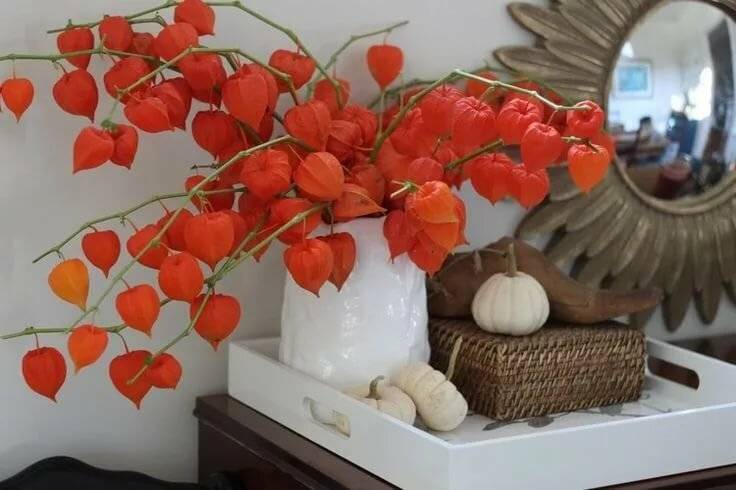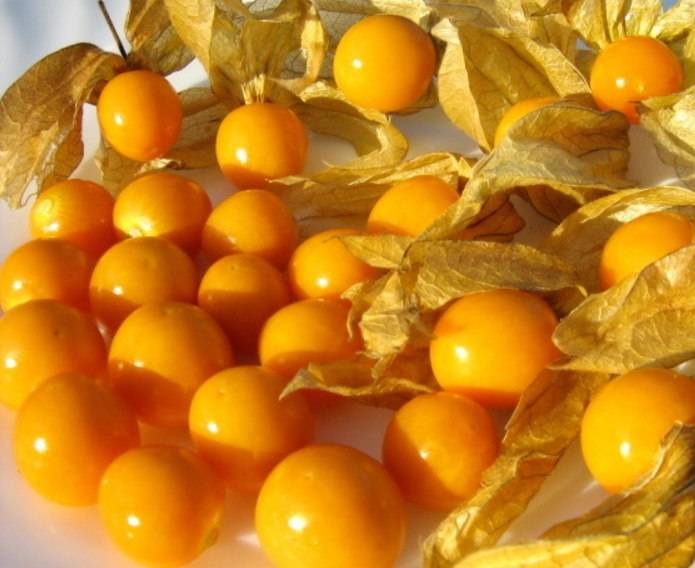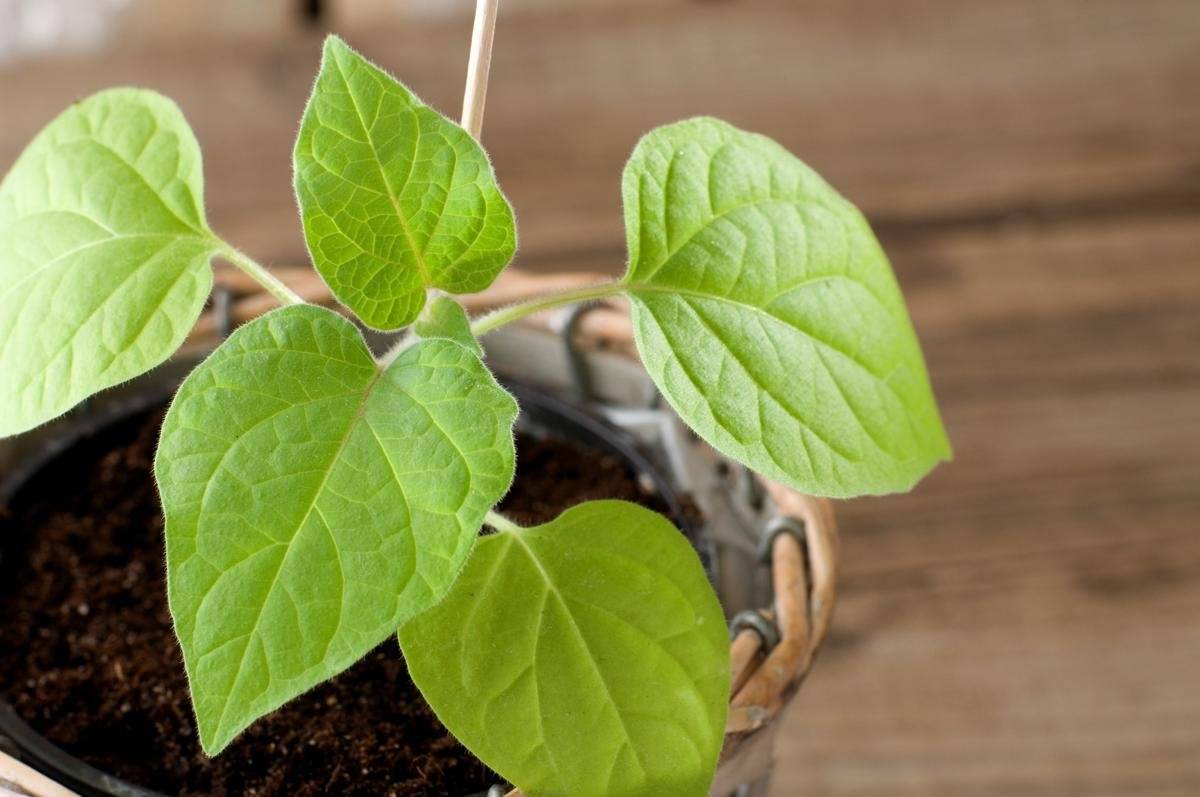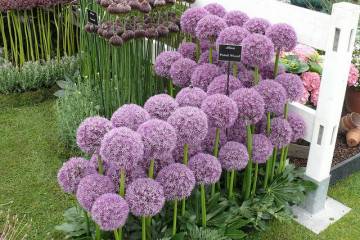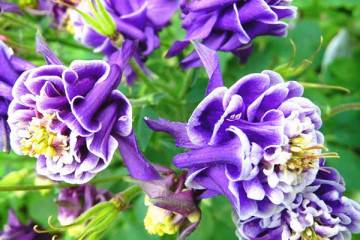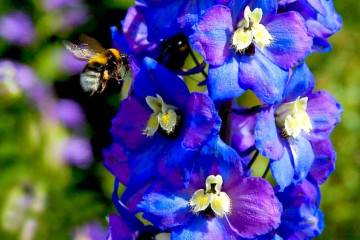Physalis decorative or edible - grown from seeds
Content:
Physalis decorative, due to its bright orange color and amazing shape, always attracts the attention of flower growers. It creates a festive mood, looks favorably against the background of other plants growing next to it. In addition, this flower is absolutely unpretentious, which allows it to be grown almost everywhere.
Physalis decorative: description and characteristics
Physalis is a plant that can be found in almost every flower bed in Central and Central Russia.
It got its wide distribution many years ago, and it is still loved by gardeners throughout the country.
The origin and appearance of decorative physalis
Physalis belongs to the Solanaceae family. In total, there are about 120 species in the genus. The homeland of the plant is the South and Central regions of America. After widespread distribution in these parts of the continent, it also came to the north of the continent, and from there to Europe. It has been cultivated as an ornamental plant since 1894. The name of the flower is translated from Greek as “bubble”. This is probably due to the fact that there is practically nothing inside the wide bright box.
Since the plant appeared quite a long time ago, myths and legends were made about it. One of them says that one day the dragon swallowed the sun, and there was complete darkness throughout the world. In this regard, all living things began to die. And one brave young man decided to fight the dragon and defeat him, no matter what. He took with him a small flashlight, which illuminated his path in the dark. The daredevil challenged the dragon to battle and won. The sun immediately shone in the sky, and its light seemed to the guy so bright that he closed his eyes and dropped his lantern on the ground. But it did not crash, but turned into many medium-sized bright orange flowers hanging on green stalks. This is how physalis appeared. Thanks to this legend, physalis has another name - the Chinese lantern.
What does physalis look like?
What physalis looks like:
- the length of an erect stem can reach 90 cm;
- the stem is dense, light green;
- leaves are oval, pointed at the ends, bright green;
- flowers are small white unremarkable;
- decorativeness appears after flowering due to bubbles that appear after flowering. They ripen by autumn, becoming a bright orange color;
- fruits ripen inside the bubbles.The diameter of each orange box is about 6 cm, there are about 10-15 of them on one stem;
- the fruit is a berry.
Physalis: where it grows
Physalis grows where it originally appeared - on the territory of the entire American continent. The plant is also grown in Europe, Asia, almost all over the world. This prevalence can be explained by its almost absolute unpretentiousness.
How physalis blooms
Many growers are worried about how physalis blooms. It blooms, like most members of the Solanaceae family, absolutely nondescript. The flowers are small, white, the buds are like bells, they are simple five-petal.
The petals are diamond-shaped, each of them clearly visible grayish veins. In the center of the white flower, yellow stamens stand out brightly. All beauty lies in the bolls that appear after flowering.
Physalis decorative in the interior
Florists and lovers of decorating their home interior brightly and unusually come up with a variety of uses for Chinese lanterns. They can be put on a fishing line and hung like garlands. You can start forming original wreaths, which have recently become popular. These fall wreaths look bright and eye-catching, fitting well with the design of any room.
The stems with the boxes hanging on them can also be used as independent elements, simply by placing them in a vase, you can form beautiful compositions by combining several different dried flowers. The plant is also loved by landscape designers.
Physalis - perennial or annual flower
This plant is perennial, it is prone to self-propagation, so there is no need to worry about its reproduction.
Useful and dangerous properties of physalis
Not everyone can find the answer to the question, physalis - what is it and why it should be grown. Everything is simple here: the decorative variety brings brightness to any garden, to any flower bed, looks great in dry bouquets, without losing its attractiveness for a long time. However, its fruits are hazardous to health. Physalis berries contain substances that cause poisoning. Of course, eating one berry is difficult to get poisoned, but if you eat them in large quantities (for example, confusing them with edible ones), you can cause vomiting, diarrhea and other problems of the gastrointestinal tract. This is especially dangerous for children who like to pull bright things into their mouths. They must be warned about the poisonousness of the flower.
Types and varieties of physalis for flower beds
There are several ornamental plant varieties that are most commonly grown in flower beds.
Physalis ordinary
On the territory of Russia, the most common physalis is ordinary, which has two varieties: Franchet and Alkekengi. The first variety is more decorative, on its tall stems there are large orange bolls up to 9 cm in diameter. The second variant has relatively small bubbles, their maximum width is 4 cm. Its stems are lying or creeping, and the flowers can be orange, yellow or red.
Physalis Peruvian
Physalis Peruvian refers to both decorative and edible (berry) varieties of physalis. Its taste is sweetish-sour, it is rich in vitamins and microelements, and has various useful properties. There are several varieties of it:
- pineapple - early ripe, its berries are used for homemade preparations and making candied fruits;
- strawberry is characterized by high stems, up to 80 cm in height, sweet berries with a characteristic strawberry flavor, which are suitable for consumption in any form;
- The sorcerer is distinguished by large, slightly flattened fruits that resemble a fruit in appearance and differ in the fruity flavor of orange or grapefruit. Can be used in any form.
Growing decorative physalis from seeds
Since physalis grows, multiplying by self-seeding, it is enough to plant it in a garden or flower bed 1 time. There are several ways to do this. It is possible to plant seeds directly in open ground, but this is only suitable for regions with a warm climate. Basically, its seeds are first planted as seedlings.
Planting seeds for seedlings
The timing of planting seeds for seedlings varies depending on the region of the country. They need to be sown so that 60 days pass from the moment of sowing to planting in open ground (more often - the beginning of spring). At the same time, the air and soil temperature should be at least 10 ° С. Step-by-step instruction:
- The seeds are disinfected for a couple of hours in a solution of potassium permanganate.
- They are sown in a container with fertile soil to a depth of 1 cm, covered with polyethylene or glass and placed in a shaded place for 3-4 days.
- The shelter is removed, the container is placed on the window so that future plants can receive sunlight.
- After 2 leaves appear, the seedlings dive into separate containers.
- Bushes are planted in a permanent place in open ground.
What does physalis seedlings look like?
Sprouted plants are outwardly similar to many members of the Solanaceae family. They have delicate oval leaves, pointed towards the end, thin, light green in color. Light veins are clearly visible.
Physalis propagation by cuttings and parts of rhizomes
If you want to propagate an already adult plant, methods such as grafting and dividing the rhizome are suitable.
Physalis cuttings
Cuttings are cut in the middle of summer. For this, the tops of the shoots, on which there are 2-3 buds, are suitable. After rooting, they are planted in open ground.
Cuttings half the length are planted in loose soil, watered and covered with a foil with a hole made for ventilation.
Division of rhizomes
The division of physalis rhizomes - what is it and what is it for, if it already perfectly reproduces by self-sowing? However, some bushes need to be rejuvenated, and the flower multiplied in this way will take root faster and will immediately produce more fruits.
The rhizome is simply dug out, neatly divided into two or more parts, the cuts are sprinkled with crushed charcoal and transplanted to a new place, where the seedlings are immediately looked after in the same way as adult plants.
Physalis care outdoors
Caring for physalis in the open field is simple, even the laziest beginner can handle it, for whom this will be the first experience in garden planting.
Proper care involves periodic feeding, bush formation and preparation for winter. In extreme heat, it is also recommended to water the flower.
Fertilization
Physalis can be fed 2 times a year: first, at the very first stages of development, in the spring, when the flower is actively growing and developing. For this, fertilizers such as:
- humus;
- compost / wood ash;
- complex mineral fertilizer for garden plants.
A second feeding is required during the flowering period. The same means are perfect, you can add potassium-phosphorus fertilizers.
How to form physalis
Growing physalis, as well as forming it, is quite simple. To prevent the bush from decaying, it should be tied up.For the appearance of more lanterns and their larger size, immediately after flowering, it is worth pinching the top of the stem. Periodically, it is required to rejuvenate the plant by dividing the rhizome and changing its habitat.
Preparing for winter
In preparation for winter, the completely aboveground part is cut off. Since it is very decorative, it can be used in dry bouquets and various compositions. The soil is mulched with peat or other natural material.
Disease and pest control
The most popular plant diseases:
- mosaic (leaves become variegated, spotted);
- black leg (at the seedling stage);
- phytosporosis.
If a mosaic appears, immediately remove all the stems on which it was found. Black leg infections can be prevented by observing the rules of watering. There are many different fungicides from phytosporosis.
Pests can attack:
- bear;
- wireworms.
In both cases, it is worth going to the garden store for special preparations.
Physalis can be grown by both an experienced florist and a beginner. In any case, the plant will become a decoration of the site. It is perfect for creative people who can use its boxes to create interesting compositions. The main charm of a flower is that it is completely unpretentious and is suitable for those who do not have a lot of time to take care of their flower bed, the plant does not need special conditions.

